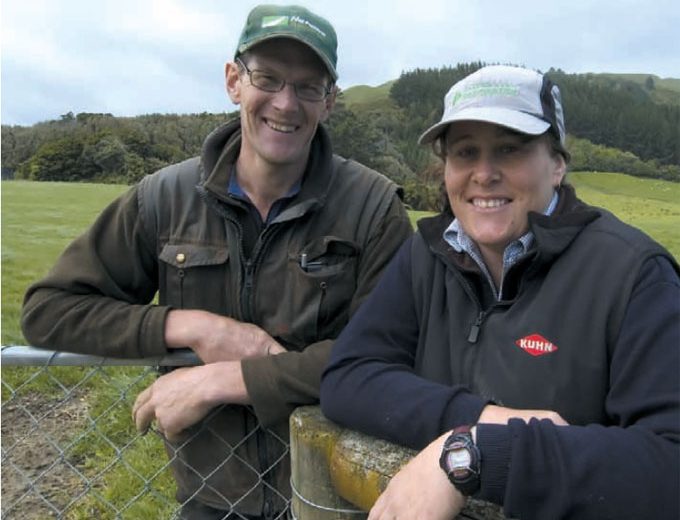You must be logged in to post a comment.
Archive
Toby first came to his property in the Fordell district when he was still in primary school, back then it was owned by Sam Henderson, a hard-working, well-respected farmer. Sam took Toby’s natural enthusiasm for the love of the land under his wing and over the years taught him everything he could about good animal and soil husbandry.
| Type of operation | Sheep and Beef |
|---|---|
| Years of dicalcic use | 20 |
| Size of farm (effective) | 320ha |
| Stocking rate (average last 6 years) | Breeding ewes 3000, Lambs finished: 4100 (137%), Ewe hoggets: 400, Rams (Terminal Sire): 40, Fattening heifers: 30, Rising 2 & 3 year Steers: 55, Weaner & Rising 2 year Steers: 30 Soil type(s) Fordell/Westmere Loam |
| Traditional product used | Hatuma Dicalcic @ 350kg/ha (Special blends applied for last three years) |
By the time Toby was sixteen he was working full-time on the farm. He later moved into management, then finally as an official partner in the business. Twenty years ago the property saw its first application of Hatuma dicalcic. ‘It was Sam’s decision to use it,’ recalls Toby. ‘He was a true stockman and everything was done by the eye. He’d seen the effect lime had on the animals’ welfare and conditioning, so dicalcic was a natural progression.’
The farm is currently running 2,700 breeding ewes which produced 3,600 lambs. They also winter 250 ewe hoggets, fatten 35-40 heifers, and another 70 steers between 1 to 3 year olds. Toby calls his operation intensive, but doesn’t entertain the principle that definition has to automatically mean high input. ‘People ask how I judge performance. First is the stock condition, the second is how much money I’m making. Because of rising costs it’s natural for a farmer to demand more out of their acreage by upping the stocking rate and putting more pressure on what’s there. A few years ago we went up to 3,300 breeding ewes on exactly the same property, but we’ve come unstuck a couple of times where we’ve pushed it too far, so we’ve had to find a happy medium.
We’re terminal sire, so everything we breed, we have to fatten and finish. The years we’ve gone for big lambing percentages, the quality wasn’t there. Last year we’ve dropped ewe numbers back by 10-12%. We’ve had a lot more singles, but we’re killing more kilograms than previous years, some at 18.5kg. We managed to quit 1,100 of them by late November.’ Toby says hitting the early market and getting more than $30 premium over the standard $70 is a huge advantage. Last year was the first year he found himself in that position, although he admits the previous season’s drought meant stock numbers were far fewer. ‘Having lambs go away in November and the heifers going to the works, means we can play the market a bit more and continue producing more weight on the lambs until the price is right. Traditionally our income period was lumped between November to March, now we’ve spread it out a bit more. Now we only have six to eight weeks a year when there’s no source of income.’




 520 Maharakeke Rd, Waipukurau
520 Maharakeke Rd, Waipukurau

 0800 80 65 65 /
06 858 8567
0800 80 65 65 /
06 858 8567 06 8588018
06 8588018
Leave a Reply